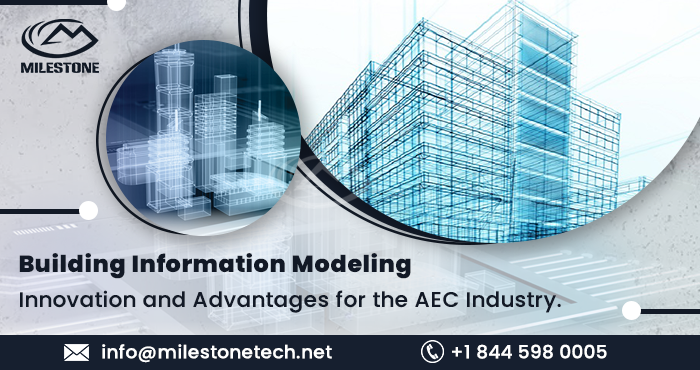Building Information Modeling: Innovation and Advantages for the AEC Industry
[edit] Innovation and Advantages of BIM for the AEC Industry
Building Information Modeling (BIM) has revolutionized the Architecture, Engineering, and Construction (AEC) industry, transforming the way projects are conceived, designed, and constructed. With its innovative approach, BIM has brought about numerous advantages that have significantly boosted efficiency, collaboration, and sustainability within the industry. Let's delve deeper into the world of BIM and explore the remarkable benefits it offers.
[edit] What is Building Information Modeling?
BIM can be best described as a digital representation of the physical and functional characteristics of a building or infrastructure project. It encompasses a wide range of elements, including geometry, spatial relationships, geographical information, quantities, and other pertinent data. By using BIM, project stakeholders can visualize and simulate the entire lifecycle of a construction project, from design and construction to operation and maintenance.
[edit] Enhanced Collaboration and Coordination
One of the key advantages of BIM is its ability to foster collaboration and coordination among project teams. Through its comprehensive and interactive nature, BIM allows architects, engineers, contractors, and other professionals to work together seamlessly. With shared access to a unified 3D model, team members can quickly identify and resolve potential clashes or conflicts, reducing costly errors and rework during construction.
[edit] Benefits of Collaborative BIM
- Improved coordination among different disciplines
- Architecture, structural engineering, MEP systems, etc.
- Better communication and visualization
- Dimensional accuracy and clash detection
- Efficient decision-making process
- Real-time updates and data availability
[edit] Greater Design Accuracy and Efficiency
BIM empowers architects and designers to create highly accurate and detailed digital representations of their projects. By leveraging intelligent objects with predefined specifications and properties, designers can ensure accuracy and consistency throughout the entire design process. This results in a reduction in design errors and omissions while enhancing the efficiency of the design iterations.
[edit] Advantages of Designing with BIM
- Parametric modeling capabilities
- Adjustments made to one area reflect in related elements
- Automated generation of drawings and documentation
- Consistency and time-saving
- Simulations and analysis tools
- Energy analysis, structural calculations, etc.
[edit] Improved Cost and Time Management
With BIM, project stakeholders can make informed decisions regarding cost estimation, resource allocation, and project scheduling. By utilizing data-rich models, BIM enables accurate quantity take-offs, cost estimations, and material schedules. This enhances cost control, reduces wastage, and promotes efficient resource management. Additionally, project timelines can be optimized by analyzing critical paths and identifying potential delays beforehand.
[edit] BIM's Impact on Cost and Time
- Accurate quantity take-offs and cost estimates
- Minimization of material wastage and cost overruns
- Efficient resource allocation and management
- Optimized workforce and material scheduling
- Early identification of potential delays
- Mitigation strategies and improved project timelines
[edit] Sustainable and Eco-Friendly Construction
BIM plays a pivotal role in enhancing sustainability and promoting eco-friendly practices within the AEC industry. Through its integrated approach, BIM enables energy analysis, efficient building systems simulations, and performance evaluations. By analyzing and optimizing energy consumption, material usage, and water resource management, BIM facilitates the design and construction of green buildings, thus reducing the overall environmental impact.
[edit] BIM's Contributions to Sustainability
- Energy performance analysis and optimization
- Reduction in greenhouse gas emissions
- Material lifecycle tracking and waste reduction
- Promoting circular economy principles
- Water resource management and conservation
- Efficient plumbing systems and rainwater harvesting
[edit] Conclusion
In conclusion, Building Information Modeling (BIM) has emerged as a game-changer in the AEC industry, fostering innovation and providing a multitude of advantages. From improved collaboration and enhanced design accuracy to streamlined cost and time management, BIM has undoubtedly revolutionized the way projects are conceived, designed, and constructed. Moreover, BIM's contribution to sustainability further reinforces its significance as a powerful tool in shaping a more efficient and eco-friendly future for the industry
--Engineering Design & BIM Services
[edit] Related articles on Designing Buildings
- Asset information requirements AIR.
- BIM and facilities management.
- BIM articles.
- BIM execution plan.
- BIM glossary of terms.
- BIM Interoperability benefits in the AEC industry.
- BIM maturity levels.
- BIM resources.
- BS 8541 Library objects for architecture, engineering and construction.
- Building drawing software.
- Construction Operations Building Information Exchange (COBie).
- Collaborative practices.
- Common data environment.
- Data drops..
- Digital engineering.
- Digital information.
- Digital model.
- Improving health and safety using BIM.
- Industry Foundation Classes.
- Information management.
- Information manager.
- Level of detail.
- MEP BIM and the building lifecycle.
- Revit.
- Soft landings.
- Uniclass.
BIM Directory
[edit] Building Information Modelling (BIM)
[edit] Information Requirements
Employer's Information Requirements (EIR)
Organisational Information Requirements (OIR)
Asset Information Requirements (AIR)
[edit] Information Models
Project Information Model (PIM)
[edit] Collaborative Practices
Industry Foundation Classes (IFC)







